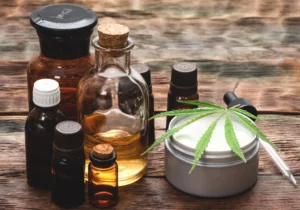The United States has just over 4% of the world’s population, yet its doctors prescribe more than 80% of the world’s oxycodone. The opioid epidemic of abusing oxycodone and other prescription pain medications has cost the country more than a trillion dollars since 2001—and the greatest financial burden of the crisis is in the workplace.
Opioids cost billions every year in lost productivity, workplace safety issues and workers’ compensation claims. But cannabis can provide the solution employers need to restore the productivity and revenue lost to the opioid crisis.
FOLLOW US ON FACEBOOK & INSTAGRAM
Many Plans, Few Solutions for the Opioid Crisis
Employees bring opioid use to the workplace when they take these medications for pain from off-work accidents or chronic conditions like arthritis. But the workplace can also create opioid use and dependence when someone suffers a workplace injury and opioids are prescribed.
Workers using opioids can cause accidents, miss work and cost far more in workplace compensation claims than their peers in similar situations who don’t use opioids. To combat the problem, entities from the federal government to workplace-related bodies such as workers’ compensation insurers and safety councils have proposed solutions that focus heavily on limiting access to opioids, rather than finding safer alternatives for treating the pain opioid users legitimately feel.
Plans proposed by the National Safety Council (NSC) and some workplace insurers emphasize tighter control of prescriptions and penalizing overprescribing doctors. Other recommendations include wider drug testing in the workplace to spot opioid users, workplace education programs and expanded employee assistance programs to help with dependence and addiction.
Some agencies such as the Centers for Disease Control and NSC also suggest advocating for alternative methods of pain control including chiropractic treatments, physical therapy and acupuncture. But conspicuously absent from those options is a true medical alternative that can manage pain without the harmful and dangerous side effects of opioids: cannabis.
Cannabis Controls Pain, Not Lives
Recent studies support the claims of many cannabis users that cannabis products can treat pain as well as, or better than, opioids can. And these cannabis products don’t cause the impairment, addiction and risk of overdose that opioids can. That’s because the cannabinoids in cannabis work very differently in the body than opioids do.
The body contains receptor networks for both cannabis and opioids, and both types of receptors can be activated to block pain signals to the brain. But the endocannabinoid receptor network—receptors for cannabinoids (the compounds found in the marijuana plant) and naturally occurring endocannabinoids—affects nearly all of the body’s processes to promote immune responses, lower inflammation and a variety of other benefits. By comparison, the opioid receptor network is limited, and its receptors are found largely in the brain, particularly the brainstem, and the digestive system.
Opioid receptors in the brain are responsible for the powerfully addictive nature of these medications—and also the potential for death by overdose. Opioids depress autonomous functions in the brainstem such as respiration and heartbeat, and when a person takes too many, or takes opioids in combination with other sedatives, these functions can be depressed to the point of stopping.
But the number of cannabinoid receptors in the brain is negligible, eliminating the risk of an overdose death. To put it another way: Because of where the different receptors are located in the body, opioids can cause death—but cannabis can’t.
Stopping the use of opioids can be stressful and risky, too, thanks to the surge of norepinephrine that occurs when opioids are no longer in control. Withdrawal symptoms can be severe, and potentially life-threatening; this plays a role in keeping people addicted. But while it’s possible to become psychologically addicted to cannabis, stopping its use doesn’t cause the same wrenching physical symptoms, because cannabis doesn’t affect norepinephrine production in the brain.
Separating Myth From Medicine
Cannabis is now being more widely used to control pain and the symptoms of many other diseases and conditions. But it still faces barriers thanks to its fearsome and legendary reputation as “marijuana,” a substance that’s still classified as a Schedule 1 restricted drug along with heroin and LSD. And anti-drug campaigns have for generations portrayed cannabis as a dangerous way to get high and a gateway to abusing harder drugs.
But cannabis products for medical uses such as pain control can contain relatively minimal amounts of tetrahydrocannabinol (THC), the psychoactive ingredient responsible for the “high,” in comparison to cannabidiol (CBD), a non-psychoactive cannabis compound that activates cannabinoid receptors related to managing pain and inflammation.
Employees using high-CBD cannabis for pain control aren’t likely to be high at work, cause accidents or take large amounts of sick leave due to opioid-related issues. In fact, they may experience greater focus and energy, and be less susceptible to the stresses of the workplace.
RELATED: CANNABIS: AN EXIT DRUG FOR THE OPIOID EPIDEMIC?
Introducing Cannabis as an Opioid Alternative
Because cannabis is a safer and less addictive alternative for pain control, incorporating it into plans for combatting opioid abuse can save lives and reduce or eliminate the many problems associated with opioids in the workplace. Employers can encourage doctors associated with their insurance and workers’ compensation programs to prescribe cannabis when possible, or at least discuss it with patients. Training that covers the risks of opioids can include cannabis as another alternative for pain management along with other natural remedies.
Opioid misuse and dependence robs employees of wages, careers and health—and costs employers billions every year. Cannabis can change that picture—and medical cannabis specialists can work with employers of all kinds to develop pain management protocols for keeping workers healthy, and workplaces safer and more productive.
Photo credit: Rawpixel.com
If you’re new to cannabis and want to learn more, take a look at our Cannabis 101 post. HelloMD can help you get your medical marijuana recommendation; it’s easy, private and 100% online.






